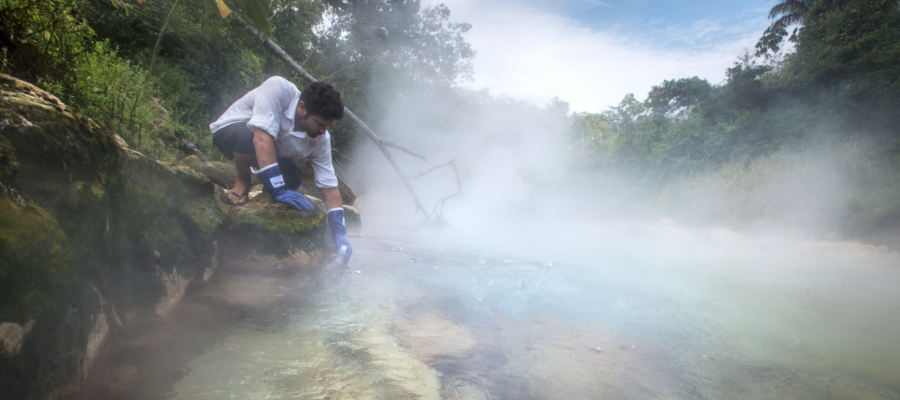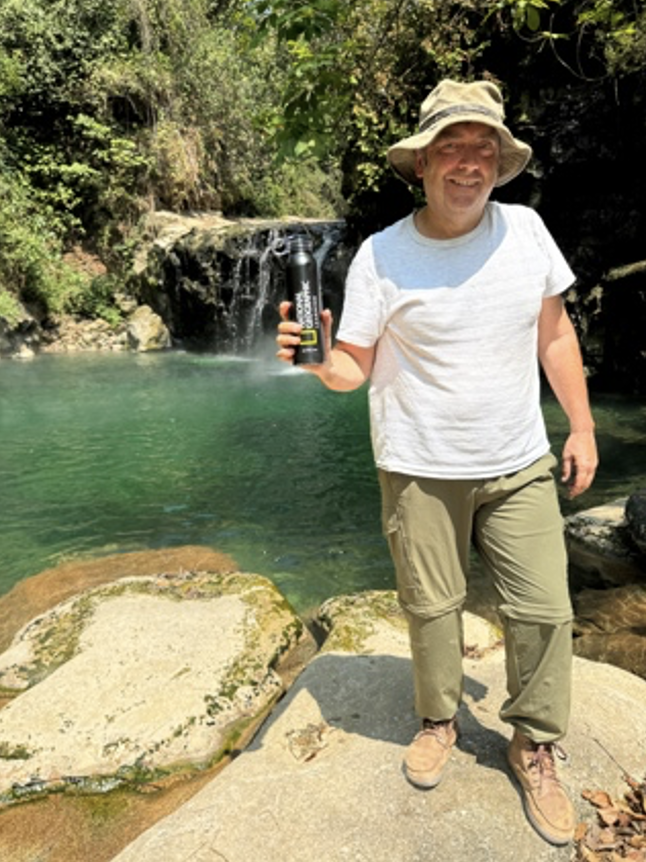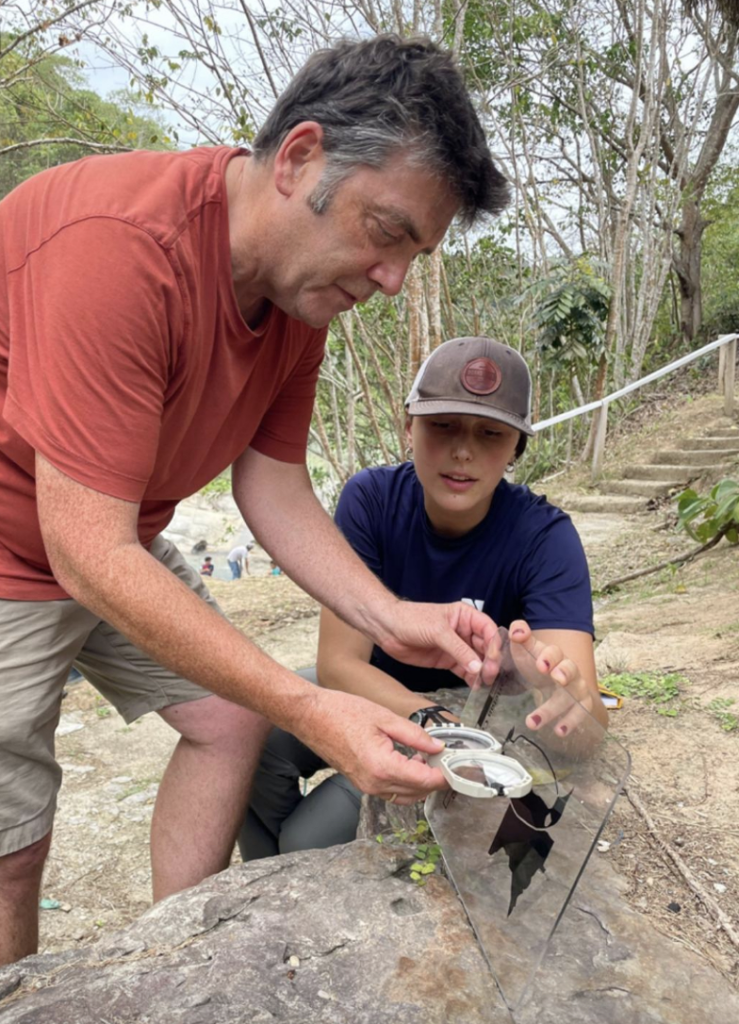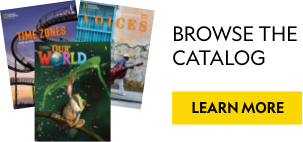Bringing Learning to Life: Reflections from the Boiling River, Part 1
In this post, National Geographic Learning author John Hughes reflects on his experience traveling to Peru’s Boiling River and shares what learning and working in an interdisciplinary environment taught him about English language education.
A learning journey
Last August I packed my bags and went on a learning journey to Peru and into the Amazon jungle. I’d been invited by National Geographic Explorer and geothermal scientist Andrés Ruzo (see above!) to join him on a field trip to the Boiling River. I’ve written about Andrés’ work in some of my course books for National Geographic Learning, so here was an invitation I couldn’t turn down! For over ten years, Andrés has studied one of the largest thermal rivers on the planet. In addition, he is involved in the preservation of the surrounding jungle from illegal logging and uncontrolled burning as well as protecting its cultural significance as “an ancient center of shamanic learning.”
An interdisciplinary approach
I’ve travelled a lot in my life, but this trip was well outside my comfort zone. The plan was to spend ten days in the jungle with a team of highly qualified people including a geologist, a microbiologist, an expert in tropical trees, an environmental lawyer, a National Geographic grantee, a drone operator, and a representative from a biotechnology company testing its latest microscope tech. For Andrés, it’s important that his team is drawn from a wide range of subject specialisms. This interdisciplinary approach is a way to share expertise, to learn from others, and to create an environment where unexpected connections are made. For this, it’s also important that the group consists of people from different countries and cultures, of different ages, and at different stages of their career, which ensures varying perspectives. It was this interdisciplinary approach that particularly interested me as an educator and ELT materials writer. What could I learn and apply from such an approach?
The Project Brief
Andrés warned me before I came that “science is slow” and not to expect anything to happen quickly. True to his word, day one began slowly. We had a long breakfast cooked by a local chef (who fed us on delicious, locally-sourced food). Then we sat on the deck of a hut with the sounds of the jungle around us as Andrés presented the project brief. We learned about the geology of the region and what the aims were of the field work: to gather water samples, mineral samples, soil samples, and fungi — all to be transported back for analysis at a later date.
“It’s important that the group consists of people from different countries and cultures, of different ages, and at different stages of their career, which ensures varying perspectives.”
John Hughes
The planning stage
After the brief, planning began. Different teams of people would go to different parts of the Boiling River and the surrounding area to collect samples and gather data. As well as studying maps and deciding where to go, planning also included the basics such as what will be the best type of footwear, the right clothing, protection against the sun or a host of creatures that might bite! It’s also at this stage that the group started getting to know each other and establishing ways of working together.
The research and data-gathering stage
At last, we walked down to the side of the Boiling River for the research and gathering stage. At its hottest point, the river bubbles to a temperature of 95 Celsius (203 °Farenheit). Steam rises off it. At first sight, it’s a mixture of natural beauty and extreme danger. Reaching in for a water sample is done at arm’s length with a pair of thermal gloves. At slightly cooler temperatures (below 65 °C or 149 °F ), you get closer and scrape samples of algae from the riverbank, but a splash of water will still burn. The work is slow and methodical, but it’s also exhilarating to be working in such an environment with a group of committed people.
Peer teaching and mentoring
Perhaps one of the most memorable aspects of this interdisciplinary experience was the opportunity to learn new skills and gain knowledge from others. You could call them ‘unplanned teaching moments’ where someone in the group shared their specialist knowledge. For example, our geologist measured the orientation of geologic fault lines across the river using a compass. In geology, this is called ‘strike and dip,’ and she taught me how to do it. On another day, I was taught how to use a microscope which you can attach to your iPad and study microscopic life taken from the river. I can think of no other learning environment where I might have ‘accidentally’ come across such skills and knowledge.
Presenting
As well as the science and the learning within the group, for a project like this to achieve its purposes means communicating to the wider world. If Andrés is to achieve his goal of preserving the integrity of the Boiling River, he needs to gain the support of the local people. One day we met with a group of local people, including a mayor’s representative from a village and a regional head of tourism. They visited the river to learn about our work and to understand how the wider world recognizes the importance of the region. All this required effective presentation and communication skills.
Fun and memory
There is much more I could tell you about the Boiling River, but Charlotte Ellis and Emily Bryson will also be describing their experiences in two more blog posts for the series Bringing Learning to Life: Reflections from the Boiling River. I have only focused on the interdisciplinary learning environment that Andrés and the whole team created there because I believe we can transfer key elements of this approach into our lessons and materials. Interdisciplinary learning like this provides the right conditions for project-based learning, including the stages of the initial brief, planning, researching, peer teaching, and presenting.
One other thing I have failed to mention is how much fun you also have as a learner in this type of classroom. You are outside the traditional four walls, you are forced to experience both risk and reward, and – most importantly – you have a lot of fun, which ensures memories and therefore more powerful learning.
Explore our National Geographic Learning English language programs and find out how we bring learning to life.





